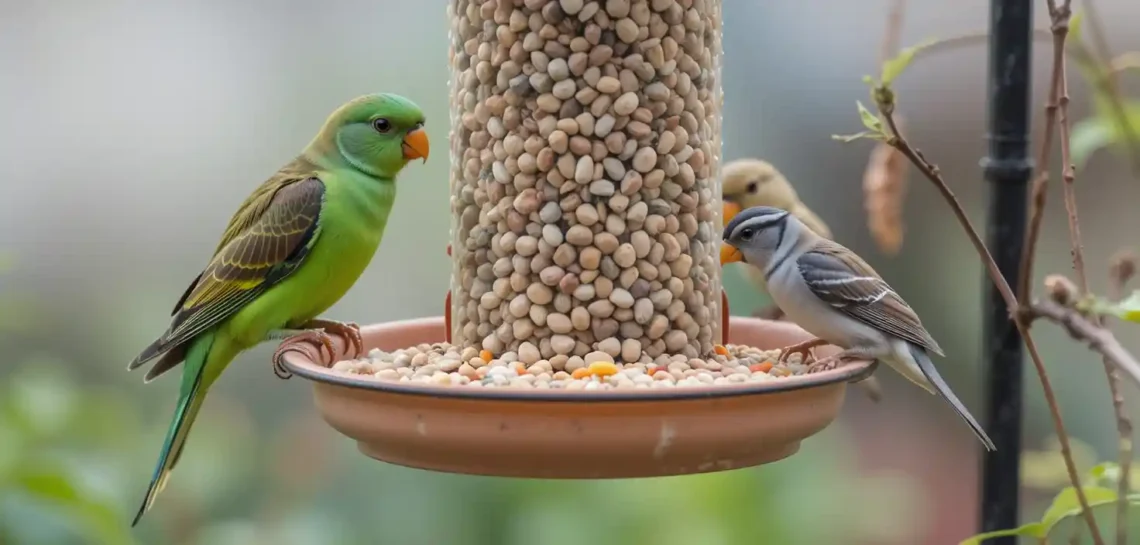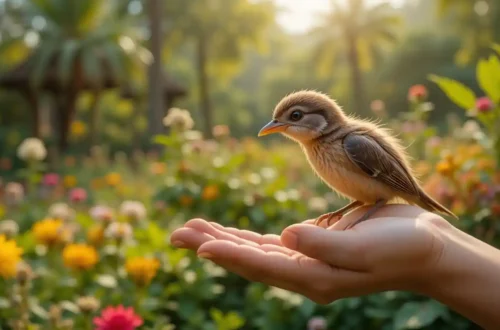Introduction
Birds are an integral part of India’s rich biodiversity, with over 1,300 species found across the country. Understanding the eating habits of birds is crucial for appreciating these creatures and preserving their habitats. In India, the diverse climate and geography support a wide variety of bird species, each with unique eating habits of birds that vary based on their environment and food availability.
Eating Habits of Birds in India
Overview of Feeding Habits
The eating habits of birds in India vary greatly depending on the species. Some birds are carnivorous, feeding on insects, small reptiles, and even other birds. Others are herbivorous, consuming seeds, fruits, and leaves. For example, the peacock, a common sight in Indian forests, primarily eats seeds, grains, and insects. These varying eating habits of birds play a crucial role in maintaining the ecological balance.
Seasonal Variations
In India, seasonal changes significantly influence the eating habits of birds. During the monsoon, many birds feast on abundant insects and fruits, benefiting from the thriving flora and fauna. In contrast, during the dry season, they may rely more on stored seeds and grains. This adaptability in the eating habits of birds allows them to survive in different climatic conditions across India.
Feeding Habits of Birds in Different Indian Regions
Northern India
Northern India, with its Himalayan ranges, supports a variety of bird species, each with distinct eating habits of birds. The Himalayan monal, for instance, feeds on insects, seeds, and berries found in the mountainous regions. The diverse flora and fauna of the Himalayas provide a rich source of food for these birds, making the region crucial for studying the eating habits of birds in high-altitude areas.
Southern India
Southern India, known for its lush forests and wetlands, is home to birds like the Indian peafowl and Asian fairy bluebird. The tropical forests of this region influence the eating habits of birds, as they thrive on the abundant fruits and insects available. The unique vegetation and climate patterns shape the eating habits of birds, ensuring a rich and varied diet throughout the year.
Eastern India
Eastern India, with its mangrove forests and coastal areas, hosts birds like the Asian openbill stork, which feeds on aquatic life and small crustaceans. The Sundarbans, a major mangrove forest in Eastern India, provides a unique habitat for studying the eating habits of birds that rely on water-based food sources. Observing these species helps in understanding how wetland environments shape the eating habits of birds.
Western India
Western India, including the Thar Desert, is home to birds like the Indian roller, which feeds on insects and small reptiles. The arid conditions require these birds to be highly adaptable in their eating habits of bird, as food sources can be scarce. Their ability to find food in challenging environments highlights the resilience and survival strategies that define the eating habits of bird in desert regions.
Impact of Human Activities on Bird Feeding Habits in India
Human activities, such as deforestation and urbanization, have significantly impacted the eating habits of bird in India. The loss of natural habitats reduces the availability of food sources, forcing birds to adapt to new environments. For example, many birds now visit urban gardens and parks in search of food, highlighting the need for sustainable urban planning that includes bird-friendly spaces. Conservationists are closely monitoring the changes in the eating habits of bird due to habitat destruction and climate change.

Conservation Efforts for Birds in India
Conservation efforts are crucial to protect the diverse eating habits of bird in India. Initiatives like creating bird sanctuaries, planting native trees, and promoting eco-friendly practices help preserve natural habitats. These measures ensure that the eating habits of bird remain stable, allowing different species to access their natural food sources. For more information on bird conservation, visit the Wildlife Institute of India.
Role of Birdwatching in Understanding Eating Habits of Bird
Birdwatching is a popular hobby in India that helps in understanding the eating habits of bird. Observing birds in their natural habitats provides insights into their feeding behaviors and preferences. For instance, birdwatchers often notice how different species interact with their environment to find food, offering valuable information about the eating habits of bird. Learn more about birdwatching in India through the Indian Bird Conservation Network.
Conclusion
Understanding the eating habits of birds in India is essential for appreciating their role in the ecosystem and for conservation efforts. By recognizing the diverse eating habits of birds across different regions of India, we can better support these magnificent creatures and their habitats. Studying the eating habits of birds not only helps in their conservation but also deepens our understanding of India’s rich biodiversity. For detailed information on Indian bird species and their habitats, visit Wikipedia.






